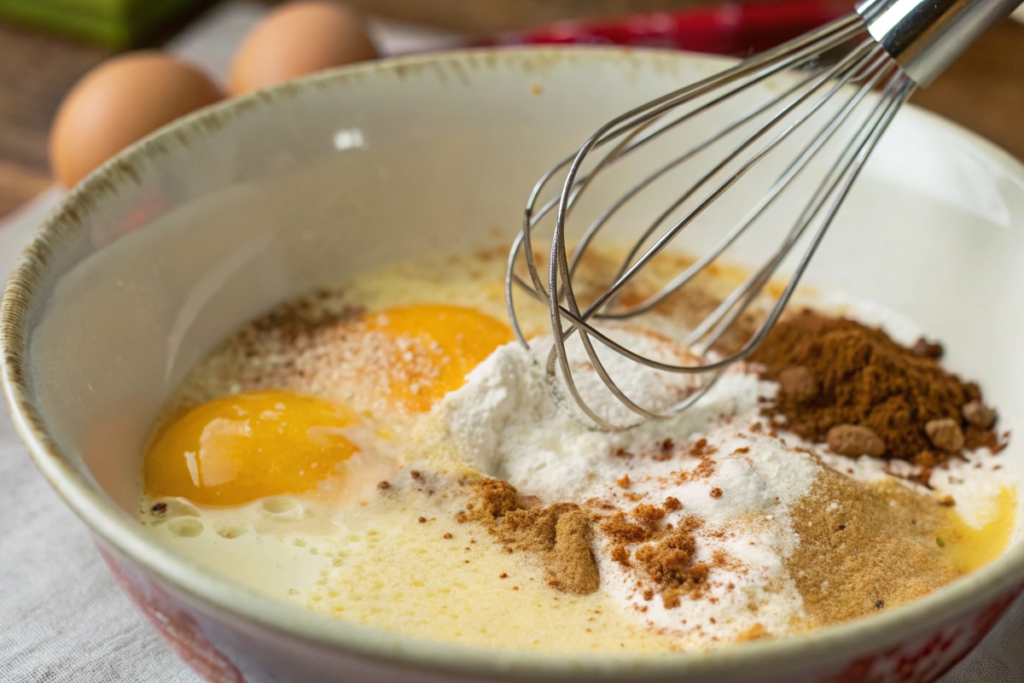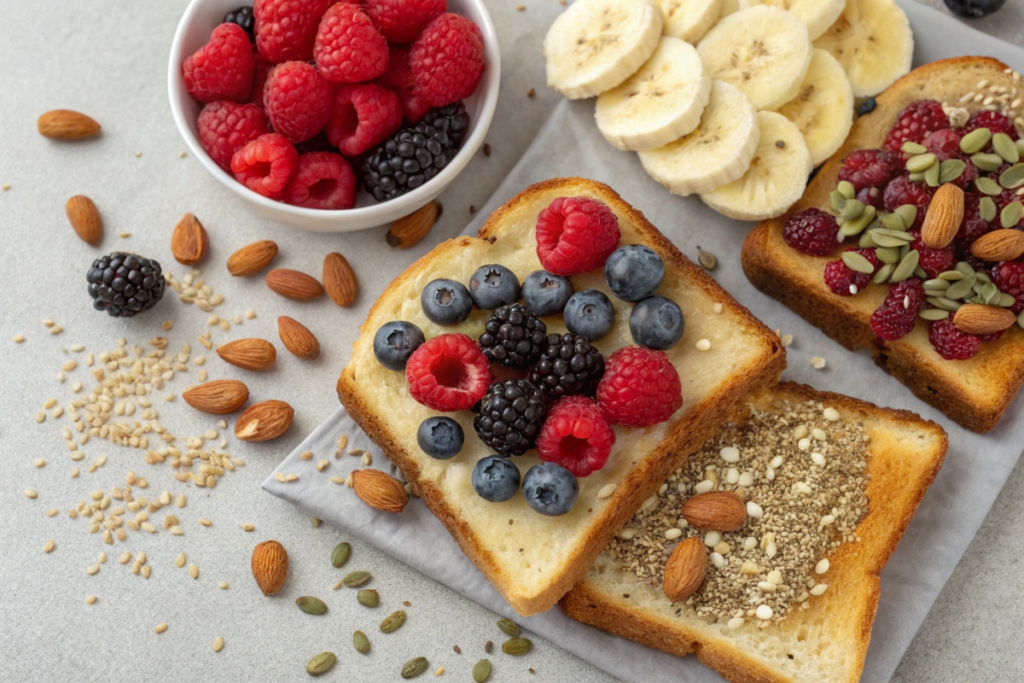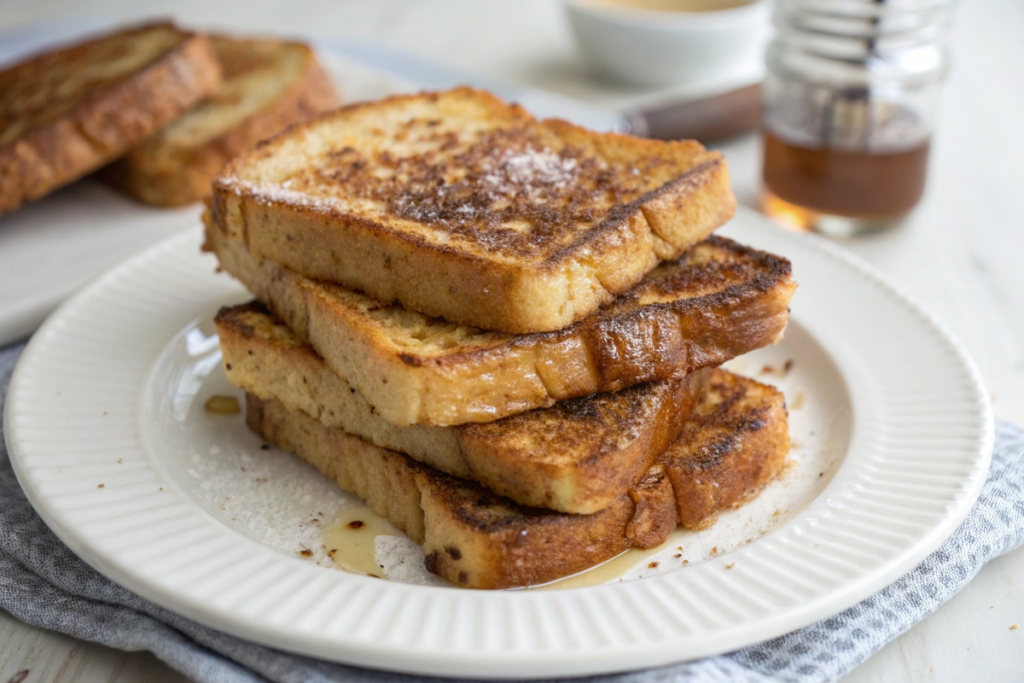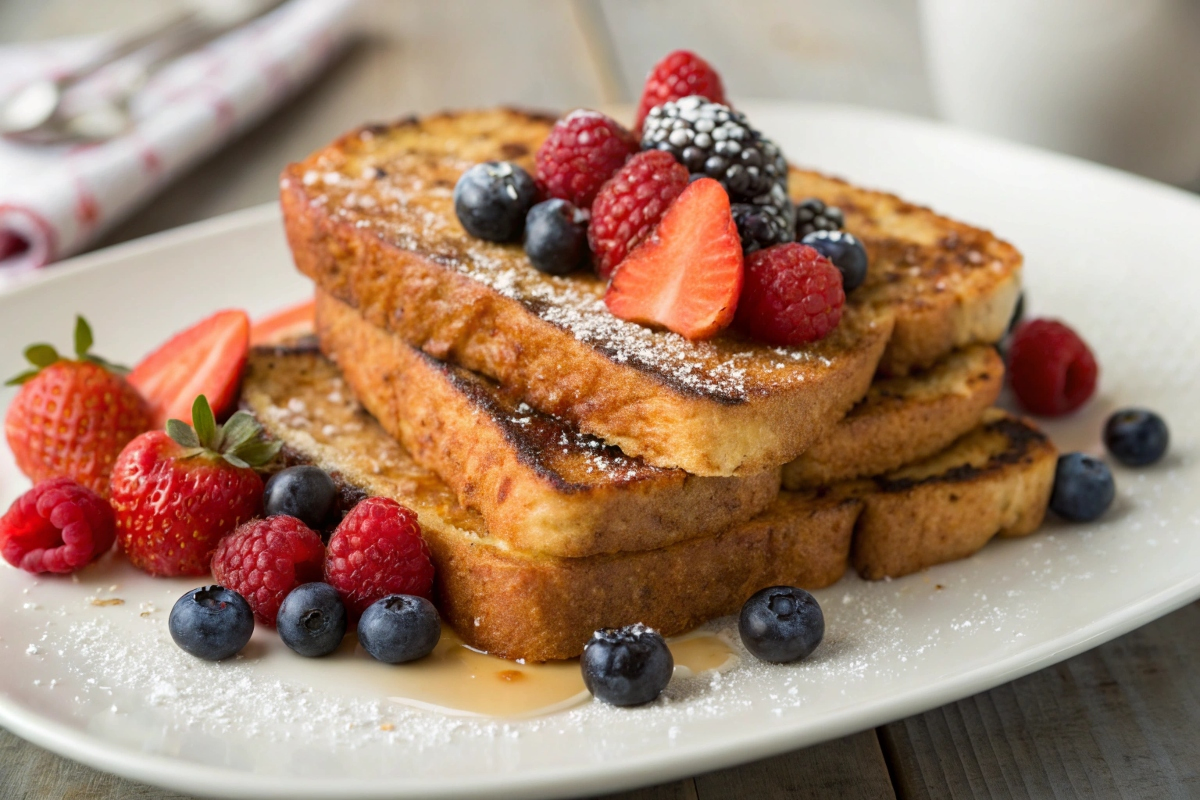Learn how to craft Healthy French Toast with wholesome ingredients and smart cooking tips. We’ll explore toppings, nutrition, and more.
Table of Contents
Introduction
Many people adore French toast. Yet, they often worry about excess calories, sugar, or fat. Essentially, this beloved breakfast dish can become more nutritious with a few clever tweaks. Comparatively, it can taste just as delightful while providing valuable nutrients. Consequently, you can savor a scrumptious meal without compromising your health goals.
Below, you will discover detailed methods and tips. We will cover ingredients, cooking techniques, topping ideas, and beyond. Altogether, you will see how healthy french toast can fit into a balanced diet.
Why Healthy French Toast Is a Delicious Choice
French toast originated as a simple solution to use up stale bread. Eventually, it evolved into a sweet and tasty breakfast staple around the globe. Traditionally, it includes bread soaked in egg and milk, then fried in butter. Consequently, it can be calorie-heavy when drenched with sugary syrups.
However, times have changed. People crave more nutritious options, especially at breakfast. Therefore, healthy french toast has emerged as a modern favorite. By adjusting the ingredients, you can raise protein levels and introduce valuable fiber. Moreover, you can reduce unhealthy fats and sugars to keep your morning meal light.
Indeed, the push for lighter meals suits many eating plans. Whether you follow a standard balanced diet or prefer a low-carb lifestyle, you can adapt the recipe. Another advantage is that you can add fresh fruits or lean proteins to increase vitamins and minerals. Altogether, these small changes provide a big nutritional boost.
Historical Roots and Evolution
French toast has been around for centuries. Chiefly, it showed up in various regions under different names, including “pain perdu” in French. Essentially, people realized bread soaked in an egg mixture cooked nicely to avoid waste. Nonetheless, the dish often involved sweeteners or rich toppings.
In modern times, the concept of using whole-grain bread or low-fat milk reflects a shift toward healthier living. Although some might insist on tradition, a more mindful approach does not diminish the flavor. Rather, it can enhance the taste by incorporating fresh, natural ingredients.
Appeal to Modern Diets
Nowadays, diets vary widely. You may be gluten-free, vegetarian, or simply watching your calorie intake. Meanwhile, you still want satisfying flavors at breakfast. Healthy french toast answers that demand by offering versatility. Additionally, you can customize the batter for almost any dietary restriction.
- Use gluten-free bread and a plant-based egg substitute for a completely vegan version.
- Choose almond milk or soy milk to limit dairy.
- Add more egg whites and less yolk if you aim for higher protein with lower cholesterol.
Such strategies ensure that everyone can enjoy a comforting plate of French toast. Undoubtedly, the universal appeal of this dish remains intact.
Essential Ingredients for Healthy French Toast

When making healthy french toast, the ingredients matter. Chiefly, the type of bread you choose will influence the final nutritional profile. Likewise, the liquids and seasonings in your batter are crucial. Below are the main components you should consider.
- Bread Selection
- Whole-grain bread: Provides more fiber and micronutrients.
- Sprouted bread: Generally easier to digest and higher in protein.
- Gluten-free bread: Ideal for those with celiac disease or gluten intolerance.
- Sourdough: Offers tangy flavor and can be easier on the gut.
- Eggs or Egg Substitutes
- Whole eggs: Supply protein and nutrients, though keep an eye on cholesterol.
- Egg whites: Reduce the fat while retaining protein.
- Vegan alternatives: Flax eggs or liquid vegan egg substitutes can work well.
- Milk or Milk Alternatives
- Low-fat dairy milk: Typical choice if you eat dairy.
- Almond milk: Light and slightly nutty.
- Soy milk: Higher in protein among plant-based options.
- Oat milk: Creamy texture that blends nicely with spices.
- Spices and Natural Sweeteners
- Cinnamon: Adds warmth and flavor without extra calories.
- Nutmeg: Infuses an aromatic depth.
- Vanilla extract: Enhances sweetness, thus helping reduce added sugar.
- Honey or maple syrup (in moderation): More natural than refined sugar.
- Stevia or monk fruit sweetener: Calorie-free alternatives if you prefer.
- Optional Additions
- Protein powder: Boosts protein content.
- Mashed banana or applesauce: Adds moisture and sweetness.
- Ground flaxseeds or chia seeds: Provide fiber and Omega-3 fatty acids.
These ingredients give you a strong foundation. Equally important, they let you tailor your recipe for taste and dietary needs. Furthermore, having a few alternatives on hand helps you stay flexible.
Choosing the Right Bread
Not all bread is created equal. Indeed, processed white bread offers limited nutrients and spikes blood sugar quickly. Conversely, whole-grain or sprouted bread deliver complex carbohydrates. These break down slower, thus providing sustained energy.
Basically, the bread should be sturdy enough to absorb the egg mixture without falling apart. Soft, airy bread can turn soggy. Conversely, hearty whole-grain slices hold their shape. Because texture matters, consider lightly toasting your bread first if it is too fresh.
Liquid Base Fundamentals
The batter is where most of the flavor develops. Typically, you combine eggs, milk, and spices. Alternatively, you can mix egg whites with almond milk to cut down on fat. Meanwhile, for a vegan version, you might rely on flax eggs and soy milk.
- Flax Egg: Mix one tablespoon of ground flaxseed with three tablespoons of water. Let it sit until it thickens.
- Plant-based milks: Almond, soy, or oat milk each have unique flavors. Adjust seasonings accordingly.
Naturally, you can sweeten the batter with a touch of honey or stevia. Nonetheless, you should avoid going overboard with sugars.
Cooking Methods
Cooking methods play a massive role in turning your dish into healthy french toast. Typically, people fry it in butter or oil. However, there are better choices.
Stove-Top Frying with Minimal Oil
Use a non-stick skillet or griddle. Lightly coat it with cooking spray. Ensure the pan is hot before adding your battered bread. Afterward, cook each side until it turns golden. However, you should watch the heat level closely. Too high, and the bread may burn on the outside while remaining undercooked inside.
- Keep the stove at medium heat.
- Flip the slices only once or twice for even browning.
- Add a small dab of oil or butter for flavor, if desired.
Baking or Air-Frying
Baking your French toast is an excellent approach if you want an oil-free result. Arrange the battered bread on a lined baking sheet. Bake at around 375°F (190°C) for 15 minutes. Then, flip and bake for another 5-10 minutes.
An air fryer can also create a crispy exterior without excess fat. Place the soaked slices in a single layer. Cook at 370°F (188°C) for about 8 minutes. Flip and cook for an additional 4-5 minutes. This method yields crisp edges, basically requiring no oil at all.
Preventing Sogginess
Sogginess occurs when the bread remains in the batter for too long. Accordingly, dip your bread just enough to coat both sides. Excess moisture can lead to a mushy center. Moreover, using bread that is slightly stale or toasted helps prevent this issue.
Crafting a Balanced Healthy French Toast Batter

Many individuals overlook the importance of balancing the batter. Basically, the ratio of eggs to milk affects flavor and texture. If you want more protein, you can increase egg whites. Consequently, you reduce the overall fat content. Additionally, adding a tablespoon of protein powder boosts nutritional value.
- Typical Ratio: For every 2 slices of bread, use 1 egg and ¼ cup of milk.
- Flavor Enhancers: Incorporate cinnamon, nutmeg, and a few drops of vanilla extract.
- Optional Thickeners: Use mashed banana or applesauce to add body and subtle sweetness.
When mixing, whisk thoroughly. This technique disperses spices evenly throughout the mixture. Furthermore, it helps achieve a consistent coat on each bread slice.
Toppings and Flavor Enhancers
Toppings can make or break your healthy french toast. However, many store-bought syrups are high in refined sugars. Thus, consider more wholesome alternatives.
Enriching Healthy French Toast with Wholesome Toppings
Fresh fruit offers natural sweetness without excess sugar. Meanwhile, yogurt adds creaminess and probiotics. Nuts and seeds give a crunchy texture, which complements the softness of the toast.
Here are some nutritious ideas:
- Berries: Strawberries, blueberries, or raspberries contain antioxidants.
- Bananas: High in potassium and naturally sweet.
- Chia seeds or flaxseeds: Provide fiber and healthy fats.
- Nut butters: Almond, cashew, or peanut butter for protein and good fats.
- Unsweetened coconut flakes: Adds a tropical twist.
Another alternative is a drizzle of pure maple syrup. Use it sparingly, or opt for a dash of honey. Nonetheless, keep in mind portion control to avoid a sugar overload.
Nutritional Benefits

Healthy french toast can supply balanced macronutrients, particularly if you pick whole-grain bread and the right toppings. In contrast, traditional versions may load you up with saturated fats and refined sugars.
- Protein Content
- Eggs or egg whites deliver a decent protein source.
- Adding Greek yogurt or protein powder can increase protein further.
- Fiber
- Whole-grain bread or sprouted bread offers more fiber.
- Berries, bananas, and seeds contribute additional fiber content.
- Vitamins and Minerals
- Cinnamon is rich in antioxidants.
- Fruits provide vitamin C, potassium, and various micronutrients.
- Lower Calorie Density
- Minimal oil usage and fewer added sugars reduce total calories.
- Options like almond milk keep the batter lighter.
Ultimately, these elements support weight management and overall well-being. Additionally, starting your day with a nutrient-dense meal often influences healthier choices later on.
Enriching Your Plate Further
While the toast itself can be quite filling, consider pairing it with additional protein. Turkey bacon, smoked salmon, or tofu scramble add variety. Another option is a spinach omelet on the side if you have time.
- Lean Proteins: Minimizes saturated fat while offering more amino acids.
- Vegetables on the Side: Sautéed spinach, mushrooms, or tomatoes can round out your meal.
Such additions ensure you have a well-balanced breakfast. Consequently, you are less tempted to snack on high-sugar items mid-morning.
Common Mistakes with Healthy French Toast
Even with the best ingredients, certain pitfalls can sabotage your efforts. Here are a few blunders to avoid.
- Overloading on Butter or Oil
- It adds flavor but can spike calories fast. Use a cooking spray instead.
- Choosing Ultra-Processed Bread
- White bread lacks nutrients and fiber. Switch to whole grains or sprouted varieties.
- Excessive Sweeteners
- Drowning your toast in syrup undermines its health benefits. Opt for fruit or light drizzles.
- Skipping the Spices
- Cinnamon, nutmeg, and vanilla enhance taste. Relying on sugar alone is a missed opportunity.
- Inconsistent Cooking Temperature
- High heat can burn the outside while leaving the inside soggy.
Addressing these mistakes ensures your healthy french toast remains both flavorful and balanced.
Keeping Healthy French Toast Fresh and Crisp
Sometimes, you might make a bigger batch for meal prep. Consequently, you will need to store leftovers. Ideally, place cooked slices in an airtight container with parchment paper between them.
- Refrigeration: Keeps them fresh for up to three days.
- Freezing: Extend freshness by freezing slices in a single layer. Once frozen, stack them in a freezer-safe bag.
- Reheating: A toaster oven or air fryer revives crispness. Microwave reheating might leave your toast rubbery.
Applying these methods helps retain the desirable texture. You can continue enjoying your healthy french toast without compromising on quality.
Additional Tips for Lighter French Toast
For those focused on lighter fare, these tips can help:
- Reduce Sugar: Use stevia, monk fruit, or minimal honey in the batter.
- Limit Sodium: Many breads contain added salt. Check labels and select low-sodium options.
- Incorporate Veggies: Serve your toast with a small salad or avocado.
- Mindful Portions: Two slices generally suffice, especially when you add nutrient-dense toppings.
Furthermore, keep track of your beverage choices. Sugary coffee drinks or juices may add unwanted calories. Hence, consider black coffee, green tea, or infused water as healthier companions.
Conclusion
In essence, healthy french toast can be just as delightful as traditional versions. Especially when you choose nourishing ingredients and apply smarter cooking methods, you can reduce unhealthy components. Moreover, you can boost protein, fiber, and micronutrients with simple substitutions.
Experiment with different breads, milks, and toppings to discover your favorite flavor profiles. Undoubtedly, these efforts lead to a more satisfying meal that aligns with your wellness goals. Ultimately, small changes can make a big difference.
Healthy eating does not mean sacrificing taste. Basically, it means making mindful decisions that support a well-rounded diet. Next time you crave French toast, transform it into a nutritious and tasty experience.
Frequently Asked Questions
Is French toast healthy for you?
French toast can be healthy if prepared with whole-grain bread, minimal sugar, and limited oil. Using egg whites or plant-based substitutes further cuts down on fat and cholesterol. Consequently, a balanced approach and smart toppings can make this dish beneficial for most diets.
Can I eat French toast while losing weight?
Yes, you can eat French toast while losing weight, provided you keep portions and ingredients in check. Opt for healthy french toast by choosing whole-grain bread, low-fat milk, or plant-based milks. Additionally, keep sweeteners minimal and incorporate fresh fruit instead of sugary syrups.
Why is French toast so high in calories?
Traditional French toast often gets fried in butter and topped with syrup, leading to extra calories. Refined bread also offers little nutritional value and can spike blood sugar. Nonetheless, switching to healthy french toast methods reduces these calorie-dense elements.
What is a low calorie topping for French toast?
Fresh fruit is a great low-calorie topping. Berries and sliced bananas add natural sweetness and nutrients. You can also try a spoonful of Greek yogurt or a light drizzle of honey. Meanwhile, sprinkling a few seeds offers additional crunch without piling on too many calories.
Suggested Internal Links
- https://iamarecipes.com/what-is-creme-brulee-made-of/
- https://iamarecipes.com/what-does-creme-brulee-taste-like/
- https://iamarecipes.com/how-to-caramelize-brulee-perfect-creme-brulee-every-time/
- https://iamarecipes.com/whats-the-difference-between-creme-brulee-and-custard/

